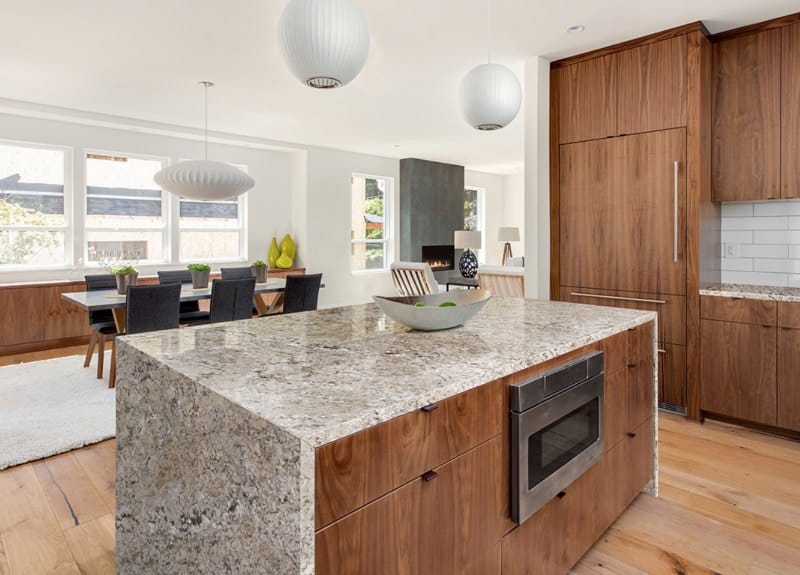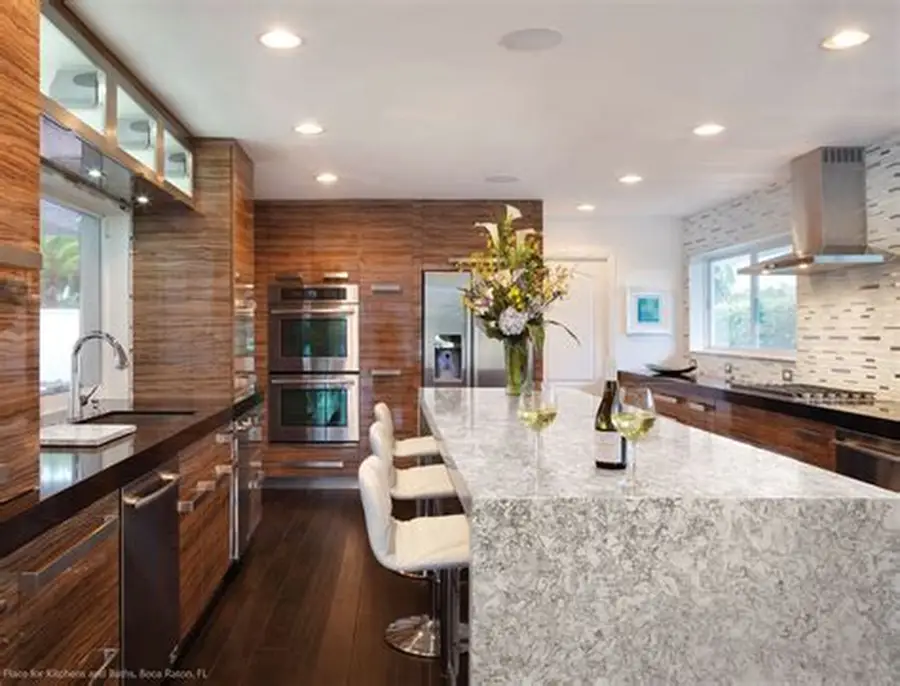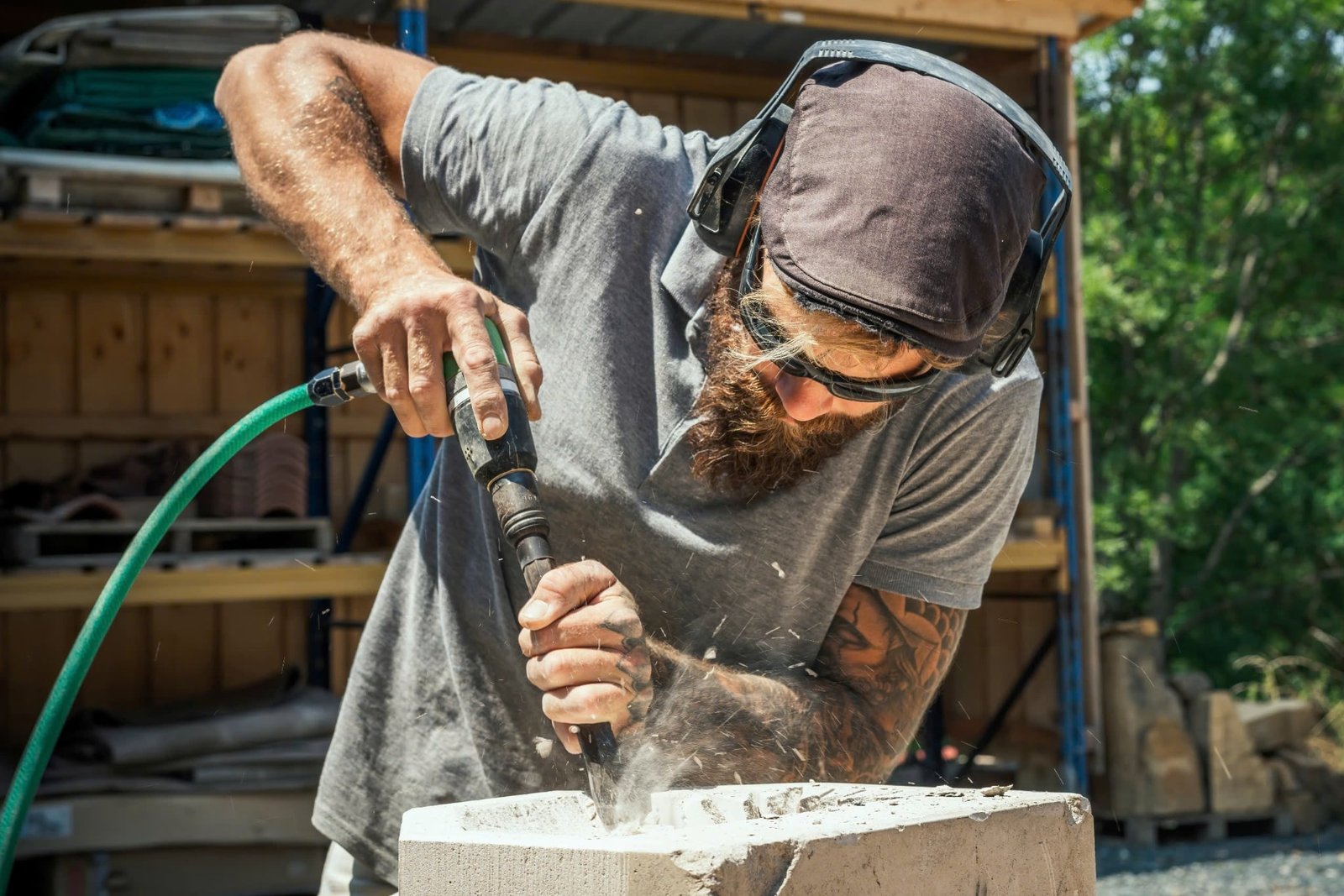
Granite countertops are a popular choice for kitchens, bathrooms, and outdoor applications because of their strength, elegance, and durability
Granite countertops are a popular choice for kitchens, bathrooms, and outdoor applications because of their strength, elegance, and durability. Whether your home features sleek black granite countertops, bright white granite countertops, or distinctive blue pearl granite countertops, treating and caring for them properly ensures they remain beautiful and functional for years.
In this guide, we’ll walk through everything you need to know to treat granite countertops—from daily cleaning and stain prevention to sealing, polishing, and long-term maintenance.

1. Understanding Your Granite
Before caring for granite, it’s essential to know what type you have:
- Polished granite countertops have a glossy finish.
- Honed granite countertops feature a smooth, satin texture.
- Leathered granite countertops have a tactile, matte feel with rich texture.
All granite surfaces are durable and heat-resistant, but they do absorb liquids since granite is a natural stone. That’s why correct care is vital to prevent stains, etching, and damage.

2. Daily Cleaning Routine
Treating granite countertops properly starts with simple daily habits:
What You’ll Need:
- Soft microfiber cloth
- Warm water
- Mild dish soap or granite-safe cleaner
Steps:
- Wipe down with a damp microfiber cloth to remove crumbs and debris.
- Add a few drops of mild dish soap or a granite-specific cleaner to warm water.
- Wipe entire surface, working in small circular motions.
- Rinse well with clean water.
- Dry thoroughly to avoid water spots.
❗ Avoid ammonia, bleach, vinegar, or citrus cleaners—they damage sealant and dull the surface over time.
3. Tackling Grease and Heavy Soiling
In a busy kitchen or bathroom, you may encounter grease or grime:
- Use a blade-edge scraper lightly—do not scratch the stone.
- Switch to a commercial degreaser made for stone.
- Wipe clean and rinse before drying thoroughly.
4. Dealing with Tough Stains & Residue
For persistent stains (like wine, coffee, oil, or hard water mineral rings):
- Apply a poultice—baking soda mixed with water creates a thick paste.
- Place it over the stain and cover with plastic wrap, taping the edges.
- Let it sit 24–48 hours, then gently peel off and rinse.
- Repeat if necessary.
Stains often occur when sealant has worn off—so keeping your granite well sealed is crucial.
5. Sealing Granite Countertops
Sealing repels liquids, enhances shine, and extends the life of your countertops.
Choose Your Sealer:
Actively seek out a high-quality granite countertop sealer.
How to Seal:
- Clean and dry the surface.
- Apply sealer in even strokes using a soft cloth or applicator.
- Let it soak (usually 15 minutes).
- Wipe off excess residue.
- Buff dry with a clean cloth.
🕐 Seal indoor kitchen or bathroom granite every 6–12 months. For outdoor granite countertops, seal annually due to weather exposure.
6. Polishing and Refreshing Shine
If the surface has dulled, follow these tips:
- Use a granite polishing compound or cream.
- Apply it in circular motions to cover one section at a time.
- Buff with a soft microfiber cloth until the shine returns.
For full instructions, see:
7. Preventive Maintenance: Avoiding Damage
Maintaining granite is simple—focus on prevention:
- Use cutting boards and trivets to avoid scratches and heat exposure.
- Wipe spills immediately, especially acidic or colorful liquids.
- Dust buff weekly to prevent residue buildup.
- Clean gently—steer clear of vinegar, bleach, or abrasive pads.
8. Handling Etching, Chips, or Cracks
Minor damage may require professional fine-tuning:
- Hairline cracks or chips can be fixed with color-matched epoxy.
- Etching from acidic exposure may need light polishing.
- For extensive damage, consult local granite fabricators or granite countertop installation services for resurfacing.
🔍 Compare maintenance with another top surface:
What Are Quartz Countertops?
9. Granite vs Quartz: Maintenance Differences
Though both are top-tier surfaces:
- Granite is semi-porous and needs regular sealing.
- Quartz is non-porous, resisting stains and not needing sealant.
Explore quartz care here:
10. When to Call the Pros
Seek professional help for:
- Graphic or deep scratches
- Significant chips
- Structural cracks
- Large-scale refinishing
Look for:
- Granite countertop showroom [location]
- Top-rated granite countertop installers near me
- Wholesale granite countertops suppliers
- Granite countertops near me or Granite countertops in [city name]
11. Extras: Handling Outdoor Granite & Big Items
Outdoor granite needs extra care:
- Clean more often
- Consider UV-resistant sealants
- Address mold or mildew quickly
For moving or installing granite:
Use proper lifting tools like gantry cranes to prevent cracking.
12. Pros and Cons of Granite Countertops
Pros:
- Heat- and scratch-resistant
- Unique, natural appearance
- Boosts home resale value
Cons:
- Requires sealing and care
- Can chip under heavy impact
- More maintenance than quartz
Final Checklist: Treating Granite Countertops Properly
- Clean daily with gentle, pH-neutral products
- Quickly wipe spills
- Seal every 6–12 months (indoors) or annually (outdoors)
- Polish and buff periodically
- Use cutting boards, trivets, and coasters
- Consult a professional for serious damage
With this attentive care routine, your granite countertops—from white to brown, polished to leathered—will stay radiant and resilient for years.

